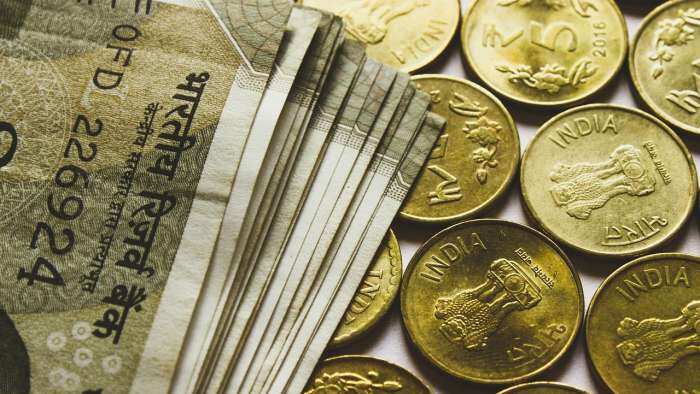Govt bond yield curve to flatten more as long-term rates fall, treasury officials say
India's 10-year bond yield fell to within a whisker of 7 per cent on Monday, while the repo rate is at 6.5 per cent.
)
Government bond yield curve is poised to flatten further in the coming weeks as long-term interest rates fall on strong demand for longer-term securities, bank treasury officials said.
The curve is the flattest in nine months, with the spread between the central bank policy rate and benchmark bond yield easing to 50 basis points on Monday, from 90 bps in October.
The last time the spread was in negative territory was in March 2015, LSEG data showed.
India's 10-year bond yield fell to within a whisker of 7 per cent on Monday, while the repo rate is at 6.5 per cent.
The overnight rate, which is anchored to the policy rate, has averaged in 6.65 per cent-6.80 per cent in the last four months.
A flattish yield curve could lead to increased mis-pricing of risk, said traders.
"With yields trending downwards, it is expected the 10-year benchmark bond yield could decline to 6.50 per cent over the next six months, with a high chance of it falling below the repo rate before any rate cut," said Arun Srinivasan, head of fixed income at ICICI Prudential Life Insurance.
Yields for bonds above 10 years have fallen amid strong demand from local and global buyers, with the latter adding to purchases ahead of India's inclusion in JPMorgan's index.
Foreign investors have bought over 800 billion rupees ($9.68 billion) in government debt since Sep. 22, when the inclusion was announced.
In contrast, short-term rates have remained elevated due to tight liquidity conditions and a hawkish stance from the central bank, which signalled that easing will only be considered when inflation falls close to the 4 per cent target in a sustainable manner.
Sustained tightness in liquidity, constructive view on inflation and favourable demand-supply dynamics for longer-term bonds have led to flatness, said Soumyajit Niyogi, a director at India Ratings & Research.
"We could see longer-duration bond yields drift further lower in the new financial year and the spread could contract more," said Vijay Sharma, senior executive vice president at PNB Gilts.
Still, some do not expect this to continue for long as the central bank may not be comfortable allowing the 10-year yield to fall below the 6.60 per cent-6.65 per cent level, said a foreign bank treasurer.
As yields fall, local banks may sell the excess government bonds they are holding, the official said.
Banks have to hold 18 per cent of their deposit base as the statutory liquidity ratio but are holding more than that.
Get Latest Business News, Stock Market Updates and Videos; Check your tax outgo through Income Tax Calculator and save money through our Personal Finance coverage. Check Business Breaking News Live on Zee Business Twitter and Facebook. Subscribe on YouTube.
RECOMMENDED STORIES

Power of Compounding: How soon will monthly SIP of Rs 6,000, Rs 8,000, and Rs 10,000 reach Rs 5 crore corpus target?

SBI Guaranteed Return Scheme: Know how much maturity amount you will get on Rs 2 lakh, 2.5 lakh, 3 lakh, 3.5 lakh and Rs 4 lakh investments under Amrit Vrishti FD scheme

EPFO Pension Schemes: Early pension, retirement pension, nominee pension and 4 other pension schemes that every private sector employee should know

SBI Senior Citizen Latest FD Rates: What senior citizens can get on Rs 7 lakh, Rs 14 lakh, and Rs 21 lakh investments in Amrit Vrishti, 1-, 3-, and 5-year fixed deposits

SIP vs PPF: How much corpus you can build in 15 years by investing Rs 1.5 lakh per year? Understand through calculations
07:23 AM IST








 Government bonds worth Rs 28,000 crore coming up for sale on Friday
Government bonds worth Rs 28,000 crore coming up for sale on Friday Govt plans to borrow Rs 7.5 lakh crore from market via bonds in first half of FY25
Govt plans to borrow Rs 7.5 lakh crore from market via bonds in first half of FY25  Floating Rate Savings Bonds 2020 (Taxable): Big opportunity to invest! Modi government all set for launch - Top things to know
Floating Rate Savings Bonds 2020 (Taxable): Big opportunity to invest! Modi government all set for launch - Top things to know Debt market outlook: RBI coming out in support of Banks, NBFC creates bullish future for bond yields, say experts
Debt market outlook: RBI coming out in support of Banks, NBFC creates bullish future for bond yields, say experts Auction for sale (re-issue) of Government Stocks: Here's what you need to know
Auction for sale (re-issue) of Government Stocks: Here's what you need to know